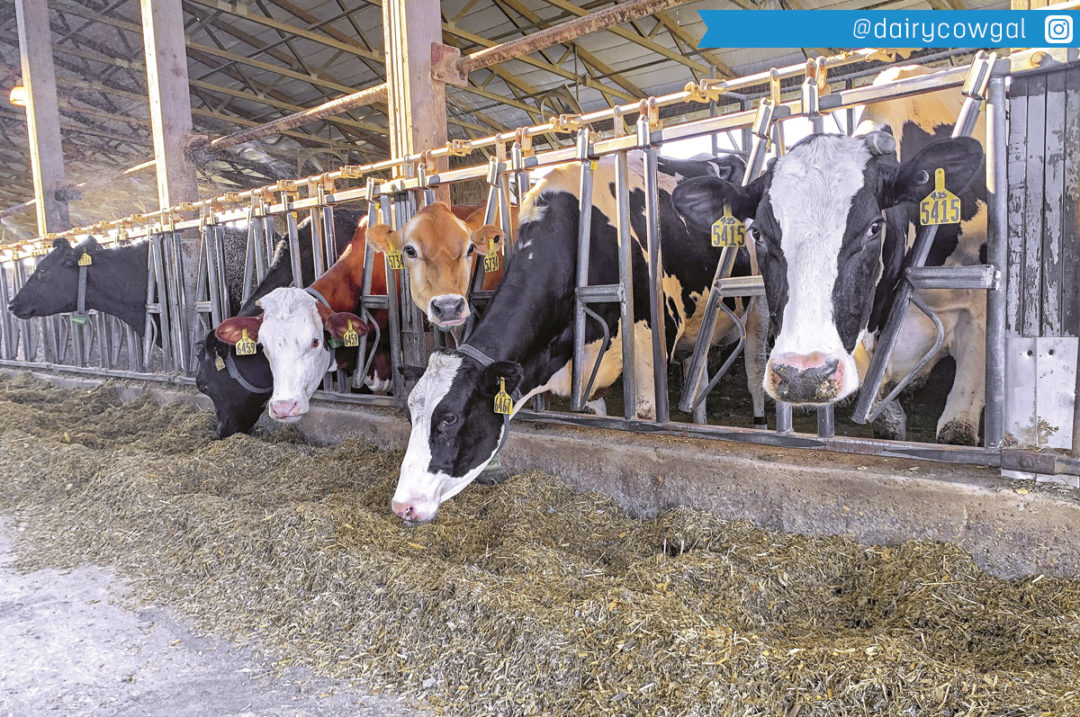Strategically grouping cows on the farm can result in efficiencies and benefits. For instance, it can lead to improved cow health, increased production, reduced incidences of metabolic disorders and increased income over feed costs while also offering more efficient nutrient utilization across cow groups, thanks to the implementation of separate rations. However, being able to group cows is predicated on having adequate facilities, as well as the labor to move and manage multiple groups of cows and the ability to mix and feed multiple rations. As a result, producers often wonder if it pays to group cows on their operation and how those groups should be prioritized to get the greatest return.
Grouping cows has the potential to increase income over feed costs and decrease nutrient excretion into the environment. Typically, the same ration is fed to a large group of cows across various stages of lactation when cows are not grouped. The ration is usually formulated to provide adequate nutrients to the most productive animals of the herd, resulting in inefficient nutrient utilization due to lower-producing cows receiving excess nutrients. Splitting cows into groups and delivering different rations tailored to each group allows for precise nutrient utilization throughout lactation, providing an excellent opportunity to reduce your purchased feed costs while maintaining or even increasing performance. It also allows for the cows’ body condition to be monitored and managed more efficiently and decreases nutrient excretion. Significant feed cost savings can also result from grouping cows, and although they will be dependent upon which specific grouping strategy is implemented, those savings could equal at least 3 cents per cow per day across the herd. However, this requires the ability to mix several different rations, which is not always easily implemented on-farm.
There are several options to consider when deciding which grouping strategy is best for your farm. Due to the unique nature of each farm, there is no one-size-fits-all option. In order to successfully implement any grouping strategy, the size, number and condition of the stalls, bunk space, water space and cow flow must be considered first. Any benefits and efficiencies gained will be negated if a pen does not meet the needs of specific animals and the labor necessary to manage those animals is not readily available.
Outlined below are some of the most common grouping strategies that could be effectively implemented on your farm.
Single dry cow or lactation group
This approach is simple, easily implemented and requires minimal pen changes, as a single ration is fed to the entire lactation or dry group. It works well on smaller farms where facilities and cow numbers do not allow for multiple groups of cows and where multiple rations are not able to be mixed. However, since the same ration is fed to all of the cows, fresh cows may not be receiving adequate energy and nutrients – and conversely, late-lactation cows may receive excess nutrients. This can lead to reduced income over feed costs, the increased excretion of nitrogen (N) and phosphorus (P), over- or underconditioned cows and reduced milk yields in first-lactation cows. Because all lactations of cows are housed together in this system, there is also the chance that older boss cows will push around more timid cows, reducing their time at the feedbunk or water space.
Far-off and pre-fresh groups
The pre-fresh period is typically defined as the last three weeks prior to calving. The goal of establishing a pre-fresh group is to properly prepare cows to transition smoothly into lactation. Implementing separate rations allows for the addition of costly additives to the pre-fresh ration and permits these cows to most efficiently utilize these additives. It also allows for less protein and energy to be delivered to the far-off cows. Some additives that are commonly used in the pre-fresh period to reduce incidences of hypocalcemia include dietary cation anion difference (DCAD) products, calcium binders or additional added calcium. Other additives for pre-fresh rations include rumen-protected choline, chromium, yeast, niacin, methionine and additional protein to achieve an adequate metabolizable protein (MP) balance.
Fresh group
After calving, fresh cows should be closely monitored to ensure a smooth transition into lactation. Since fresh cows are very susceptible to metabolic diseases, grouping them separately from the rest of the herd and feeding a ration specifically tailored to their metabolic needs can make this transition more seamless. Fresh cows typically have a lower dry matter intake (DMI), so establishing a separate group and ration allows for a nutrient-dense ration to be fed and for less competition at the bunk during this period of lower DMI. The fresh cow ration is similar to the high-group ration but typically contains less starch and more fiber and rumen-undegradable protein (RUP). This ensures the cows receive adequate fiber to promote their rumen health and their MP requirements can be met without providing too much starch. Having a separate fresh cow ration also allows for high-priced additives to only be fed to the target group for a short period of time, increasing nutrient utilization. Some of the most common additives for fresh cows include rumen-protected choline, chromium, yeast, organic trace minerals, rumen buffers and niacin.
If it is feasible for your farm, separate the first-lactation fresh cows from the older, more mature fresh cows. Doing so may not always result in the need for a separate ration but can help decrease competition at the bunk. First-lactation cows that are grouped separately from their older herdmates lie down more, eat more and have fewer aggressive interactions with other cows. This results in reduced stress, increased milk production and the potential for better cow health.
Peak to mid-lactation group
Providing a separate ration during the peak lactation phase can help maximize milk production. Compared to fresh and early lactation cows, peak to mid-lactation cows have a significantly higher DMI. Because of this increase in DMI, the peak milk ration is not as nutrient-dense as the fresh cow ration. Many of the high-cost additives included in the fresh cow ration are also typically removed. However, rumen health remains key to maintaining peak production, so the ration will typically contain high-quality forages, an ionophore to improve glucose availability, rumen-protected amino acids, rumen-inert fat to maintain body condition, a rumen buffer and yeast.
Late-lactation group
The goal of the late-lactation group is to manage body condition as cows prepare to enter the dry period. Cows that are overconditioned as they enter the dry period are at a greater risk for metabolic diseases and, in turn, decreased potential milk production during the subsequent lactation. The energy concentration of the late-lactation ration is decreased and high-cost additives are removed. Since the goal for cows in this group is to maintain production and body condition, lower-quality forages can also be implemented in this ration if there is adequate inventory on-farm.
Grouping cows and providing these groups with specifically tailored rations has its efficiencies and benefits. Some of those benefits include the potential for increased production, reduced incidences of metabolic disorders, increased income over feed costs and improved cow health. However, this strategy also requires producers to have adequate facilities, labor and, potentially, the ability to mix extra rations. Work with your farm’s team of trusted professionals to develop a strategy that will work best for your operation.











